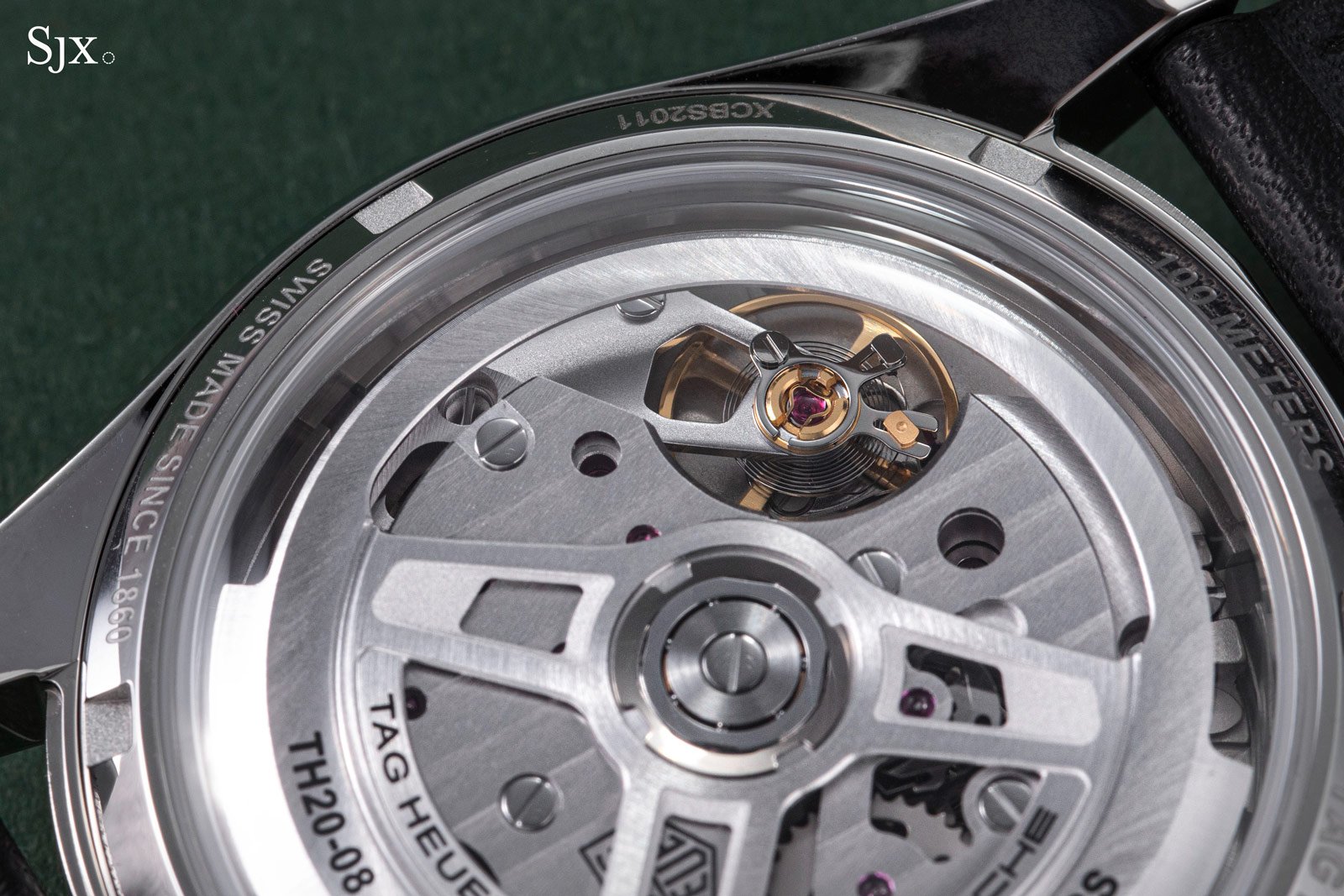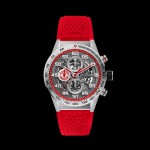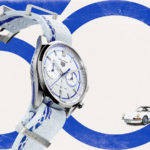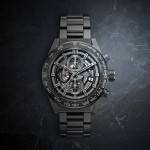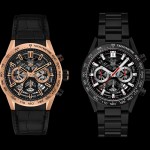Review: TAG Heuer Carrera Chronosprint x Porsche, the Accelerating Chronograph
The perfect car (or watch) for now.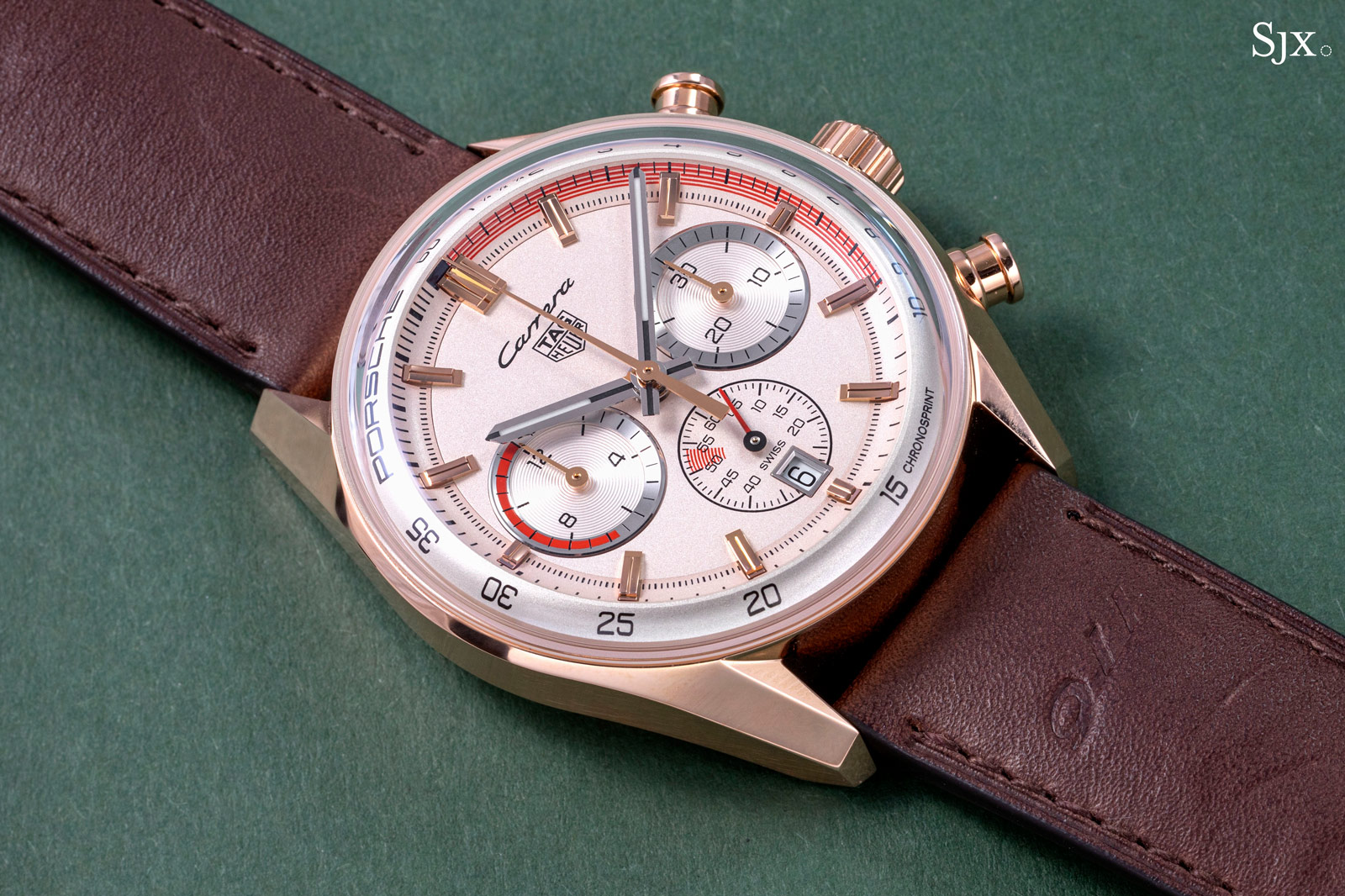
The 1971 Porsche ad quoted Dr. Ferry Porsche in bold letters beneath a Porsche 911: “There is no such thing as the perfect car. There is only the perfect car for now. A car with all the latest proven engineering concepts and design ideas.”
The recently presented TAG Heuer Carrera Chronosprint x Porsche, with its novel chronograph complication, illustrates this idea to the letter. A reference to the acceleration of the original 911, its central seconds hand speeds up for the initial 9.1 seconds of an elapsed minute before slowing down to complete a full minute thanks to non-circular gears.
Offered in two distinct versions of steel or rose gold, the Chronosprint commemorates not only the 60th anniversary of the watchmaker’s iconic Carrera collection but also pays homage to Porsche’s legendary creation—the 911 (initially presented as the 901 in 1963).
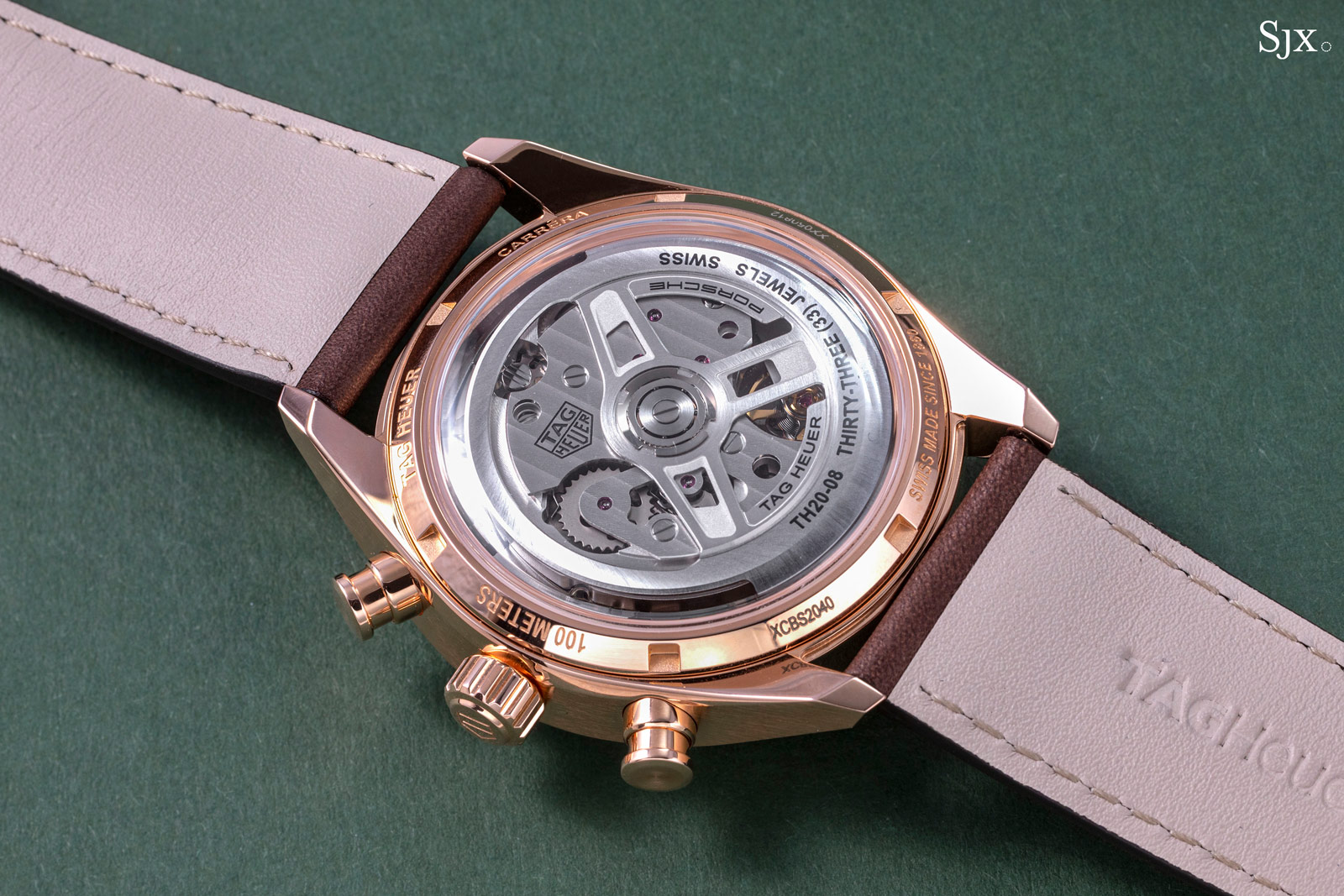
The TH20-08
Initial thoughts
TAG Heuer’s Carrera x Porsche collection has expanded with the pair of special-edition Chronosprints. However, compared to the earlier 911 RS 2.7 model that was merely a cosmetic makeover, these new Chronosprint aligns more closely with the ethos and spirit of Porsche because it incorporates a simple but clever additional complication within the chronograph.
For one, the design evokes the aesthetics of Porsche dashboards from the 1970s, creating a dynamic and speed-focused timepiece. The styling serves as a tribute to the racing heritage of the carmaker, but also one which will appeal to enthusiasts who drive their 911s on public roads.
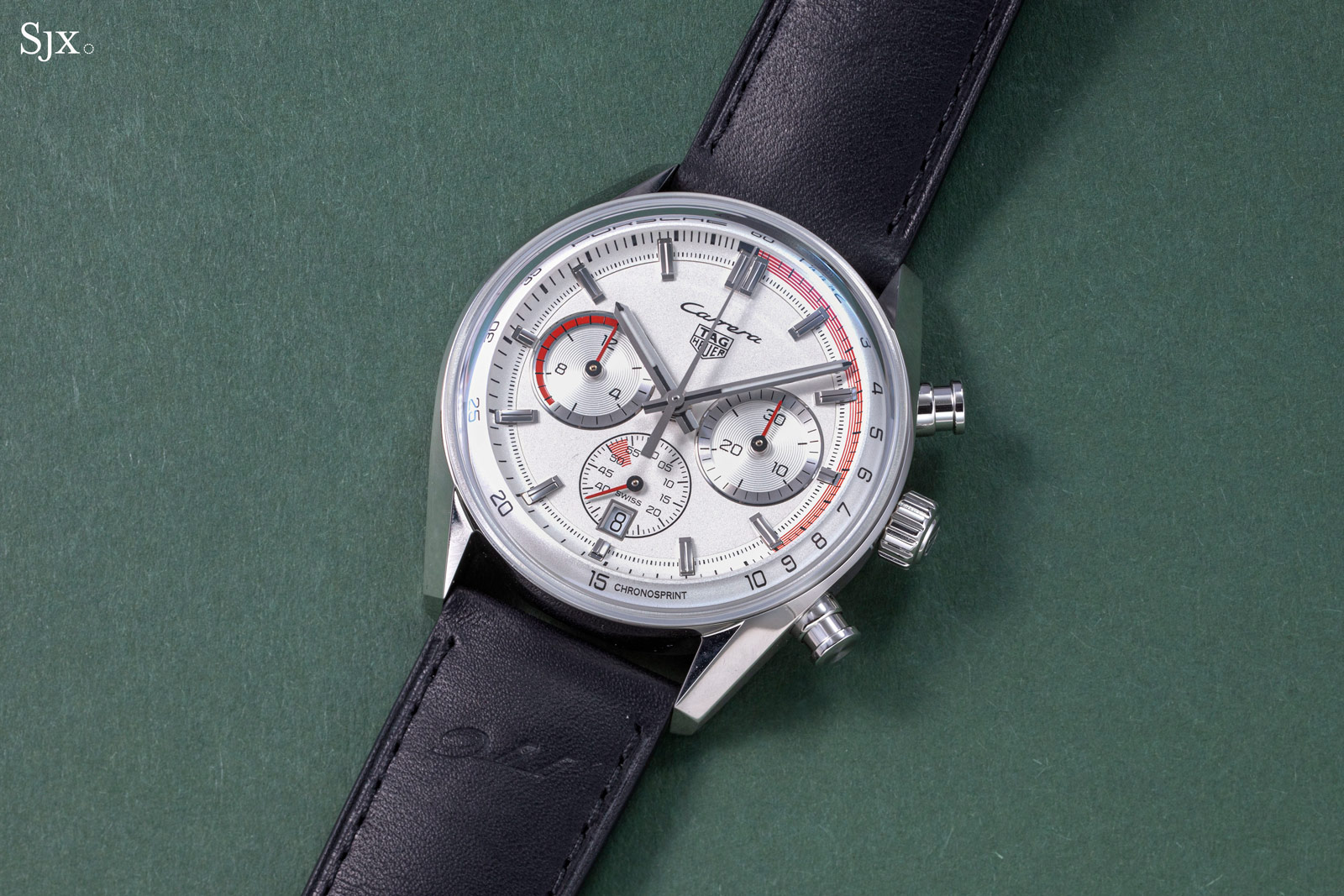
While the Chronosprint may initially captivate with its understated vintage-inspired aesthetic, its true essence shines through when the chronograph gets going. The variable speed of the seconds hand is an unexpected and intriguing feature that will entice car and watch aficionados alike.
Admittedly, the true functionality of the accelerating seconds hand is up for debate, but the ingenuity and simplicity of its construction are admirable. At the same time, it is conceptually a perfect fit for a motorsports chronograph. It may not solve any real-world timing problems, but it does create a romantic link to the original 911.
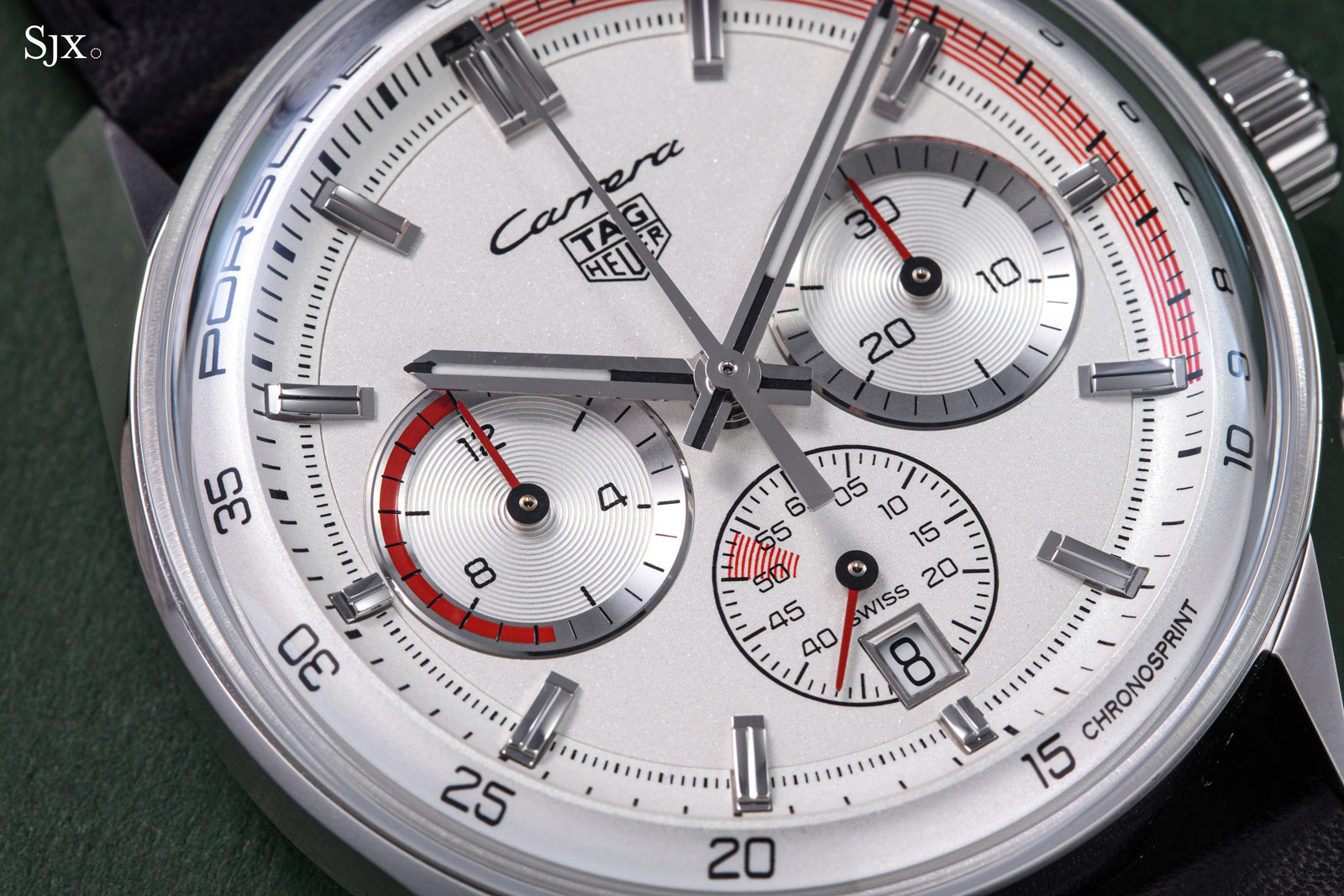
Also, it’s worth noting that TAG Heuer opted not to preserve the “Carrera” in italics under 12 o’clock that was found in the pre-production model here, which we had the opportunity to photograph. Instead, the production model reverts back to the familiar writing style that TAG Heuer has employed in the Carrera line for years.
Personally, I believe that the italic “Carrera” added a unique touch to this particular watch, much like the correct “Porsche” inscription on the dial flange at 11 o’clock. These subtle design choices can make a significant difference in the overall aesthetics and character of the timepiece.
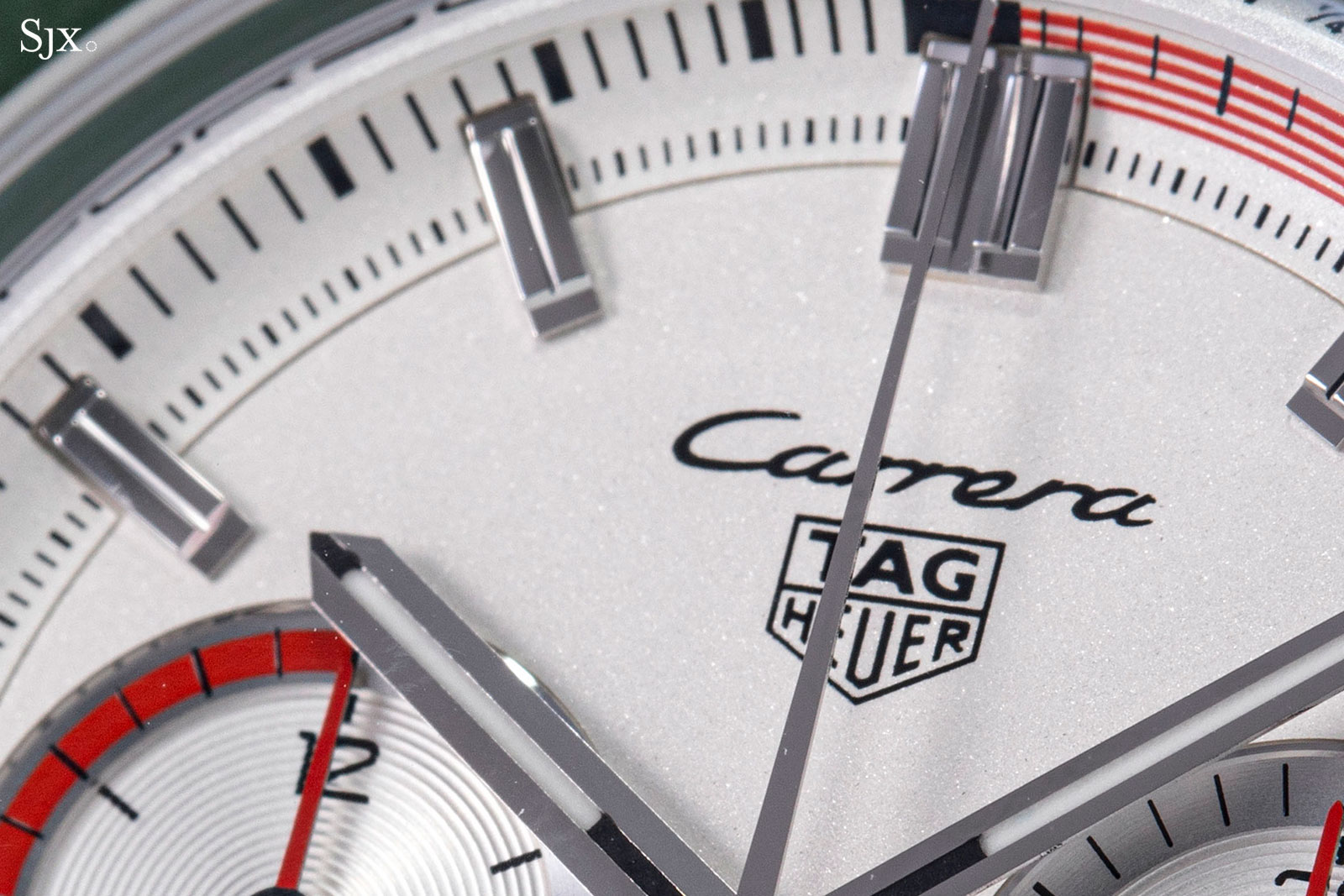
Importantly, the Chronosprint doesn’t cost that much more than the standard Carrera “Glassbox”. Priced at US$9,200 in steel, the Chronosprint is an easy choice over its counterpart with the conventional movement.
However, because the Chronosprint is based on the standard Carrera “Glassbox”, it has similar dimensions, which means it is relatively chunky for a vintage-inspired watch.
An effective timing instrument or just a playful add-on?
The Carrera Chronosprint x Porsche features the in-house TH20-08 calibre, which finds its origins in the TH20 introduced at Watches & Wonders earlier in the year.
The inspiration behind its creation draws on the then-remarkable acceleration of the Porsche 901 from 1963, a sports car that could sprint from 0 to 100 km/h in just 9.1 seconds – and later became known as the 911. This ingenious movement mirrors the rapid but inverted progressive acceleration of the iconic automobile, aligning the watch’s functionality with the 911’s spirit of speed and performance.
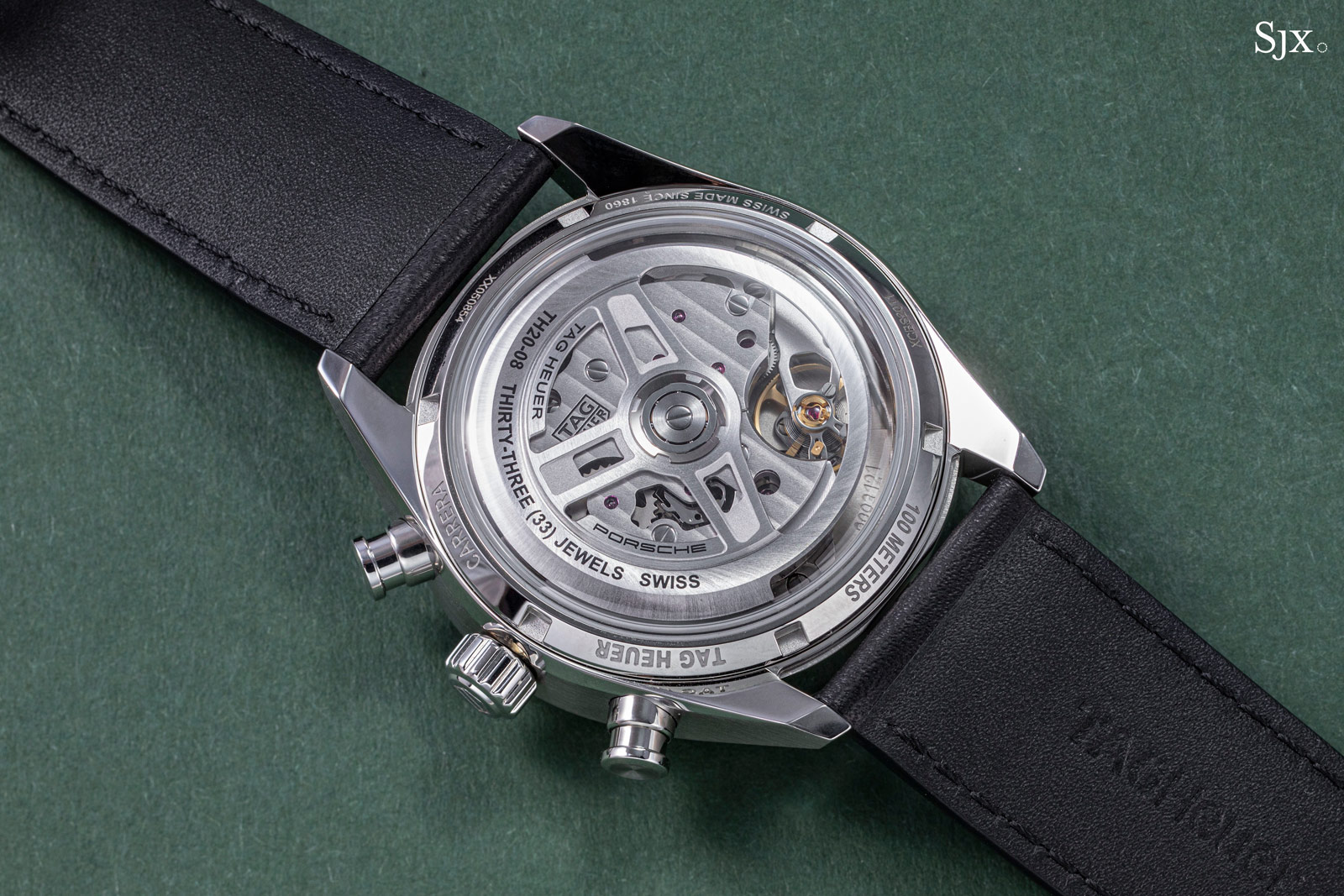
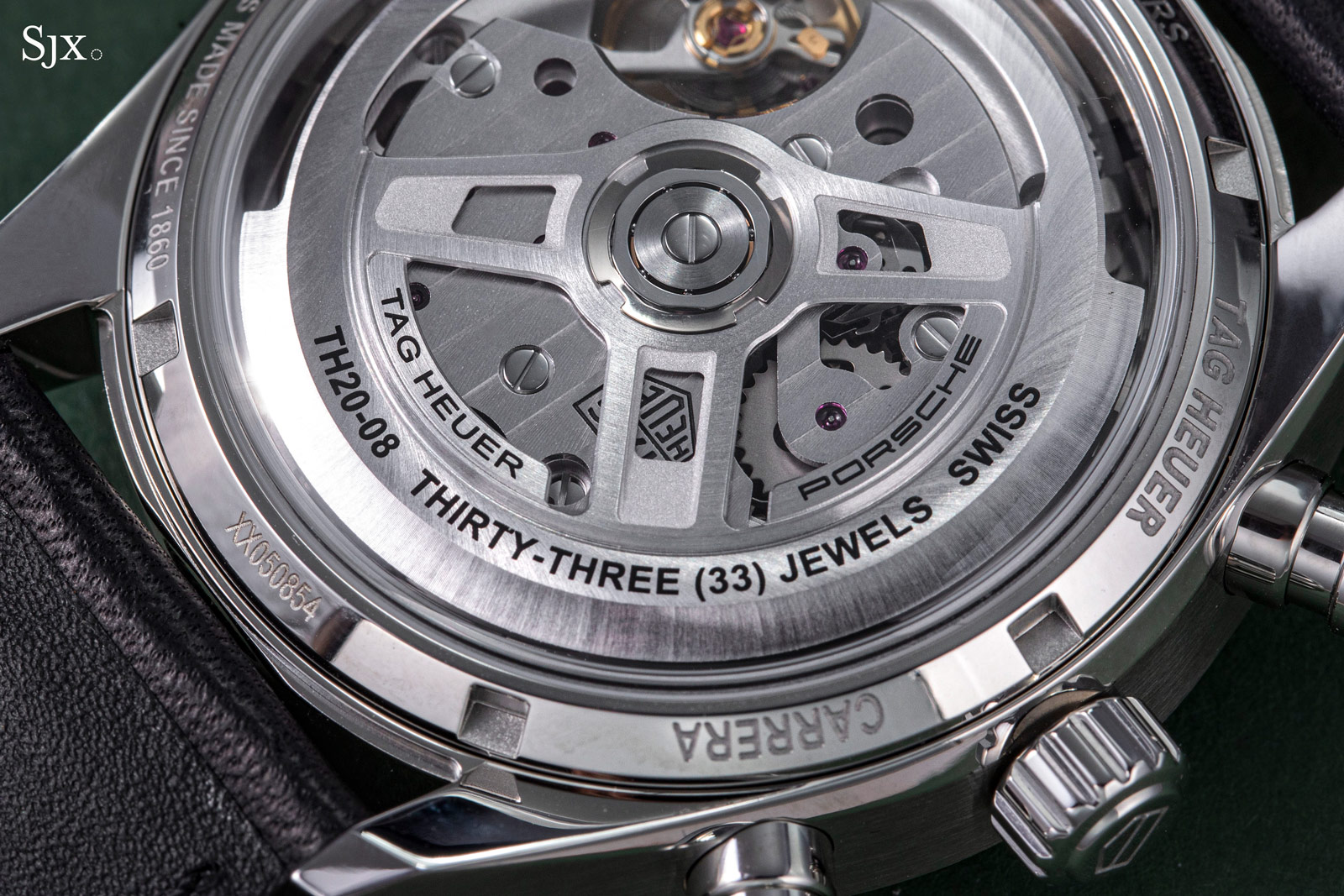
One can’t help but notice the distinctive presence of an oscillating mass, artfully crafted in the likeness of a three-spoke steering wheel reminiscent of a Porsche
The secret to the non-linear motion of the seconds hand is a pair of non-circular gears produced using the LIGA etching process that allows for parts in complex forms.
By adding two snail-shaped gears to the vertical clutch assembly, the calibre is able to perform an initial acceleration and then deceleration of the central seconds hand over every 60-second timing period, repeating the same peculiar motion for every subsequent minute.
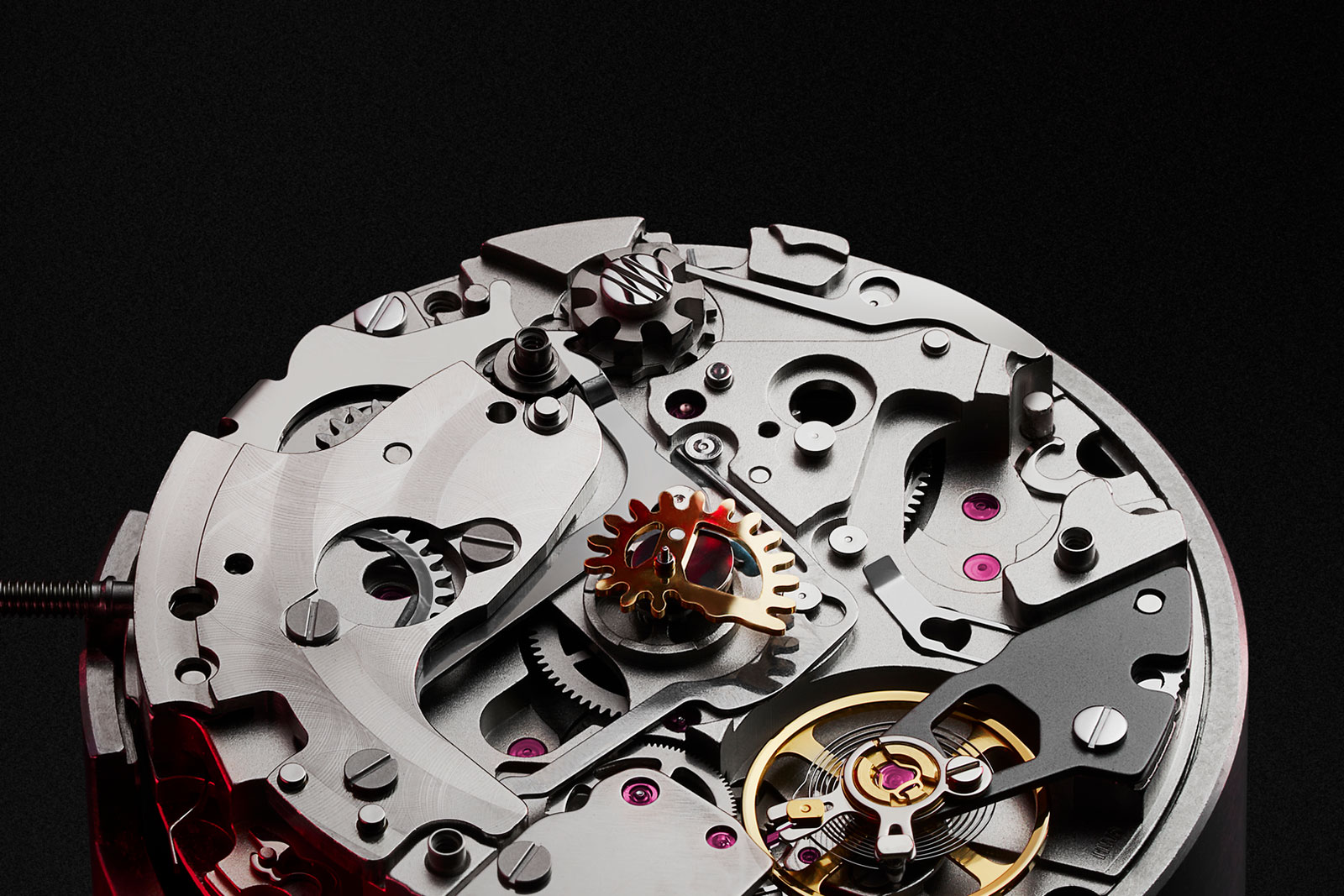
One of the two non-circular gears is visible at the centre of the movement. Image – TAG Heuer
The Chronosprint is a dual-purpose creation, both functional and playful, though the functionality needs a bit of practice to understand.
The seconds scale is designed to reflect the non-linear motion of the seconds hand, so the distance between hashmarks varies around the dial. The hashmarks spread out as the central seconds hand moves at a correspondingly slower pace, in order for accurate time measurement. However, interpreting the elapsed time measurement may require some getting used due to its unique visual representation.
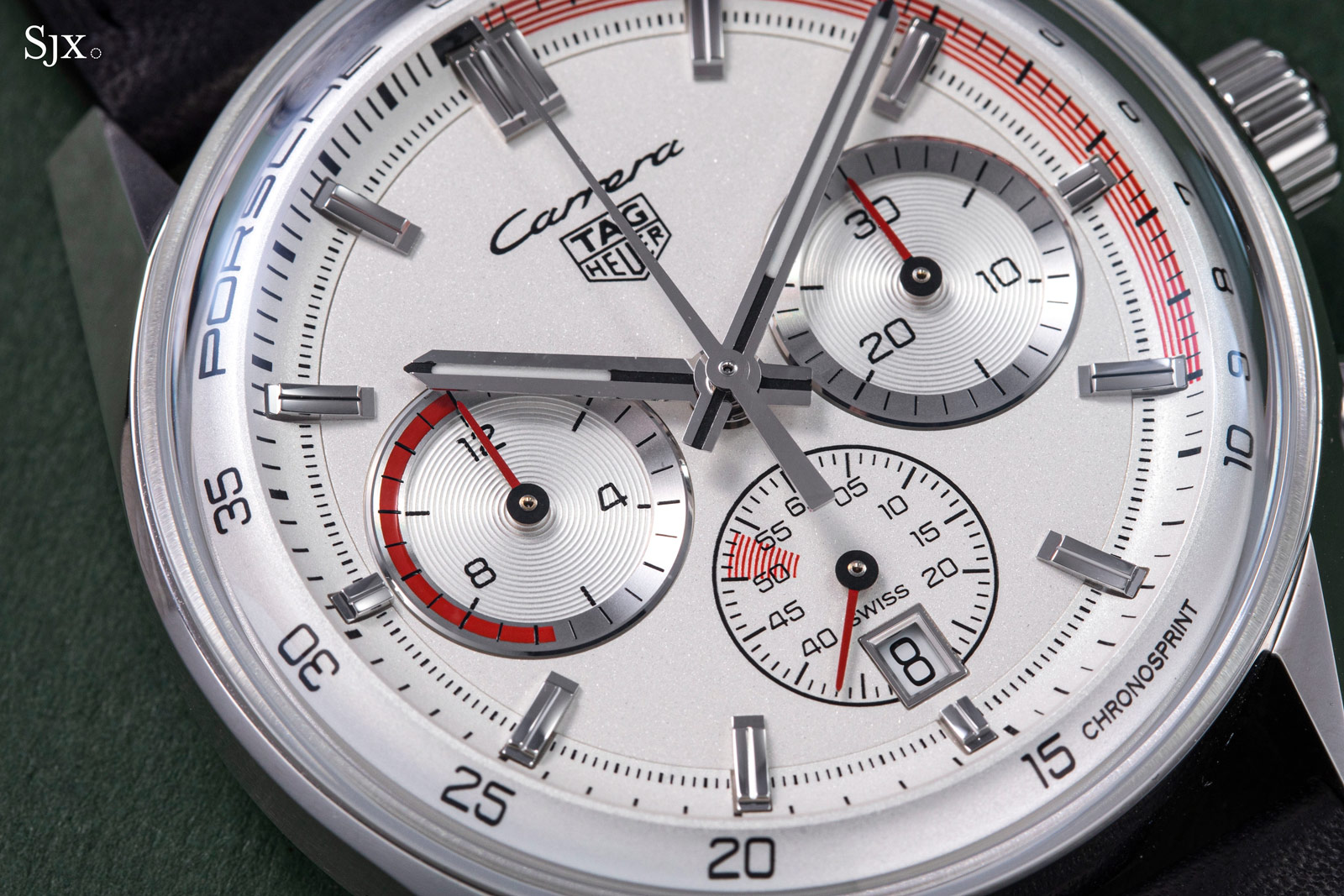
A choice between steel and gold
While the design cues of the Chronosprint draw inspiration from the recently unveiled Carrera“Glassbox” showcased at this year’s Watches & Wonders in Geneva, there are notable distinctions.
Specifically, the Chronosprint expands from 39 mm to a sportier 42 mm. This alteration extends to the dial diameter, significantly enhancing readability — a crucial attribute for a watch equipped with such a complication.
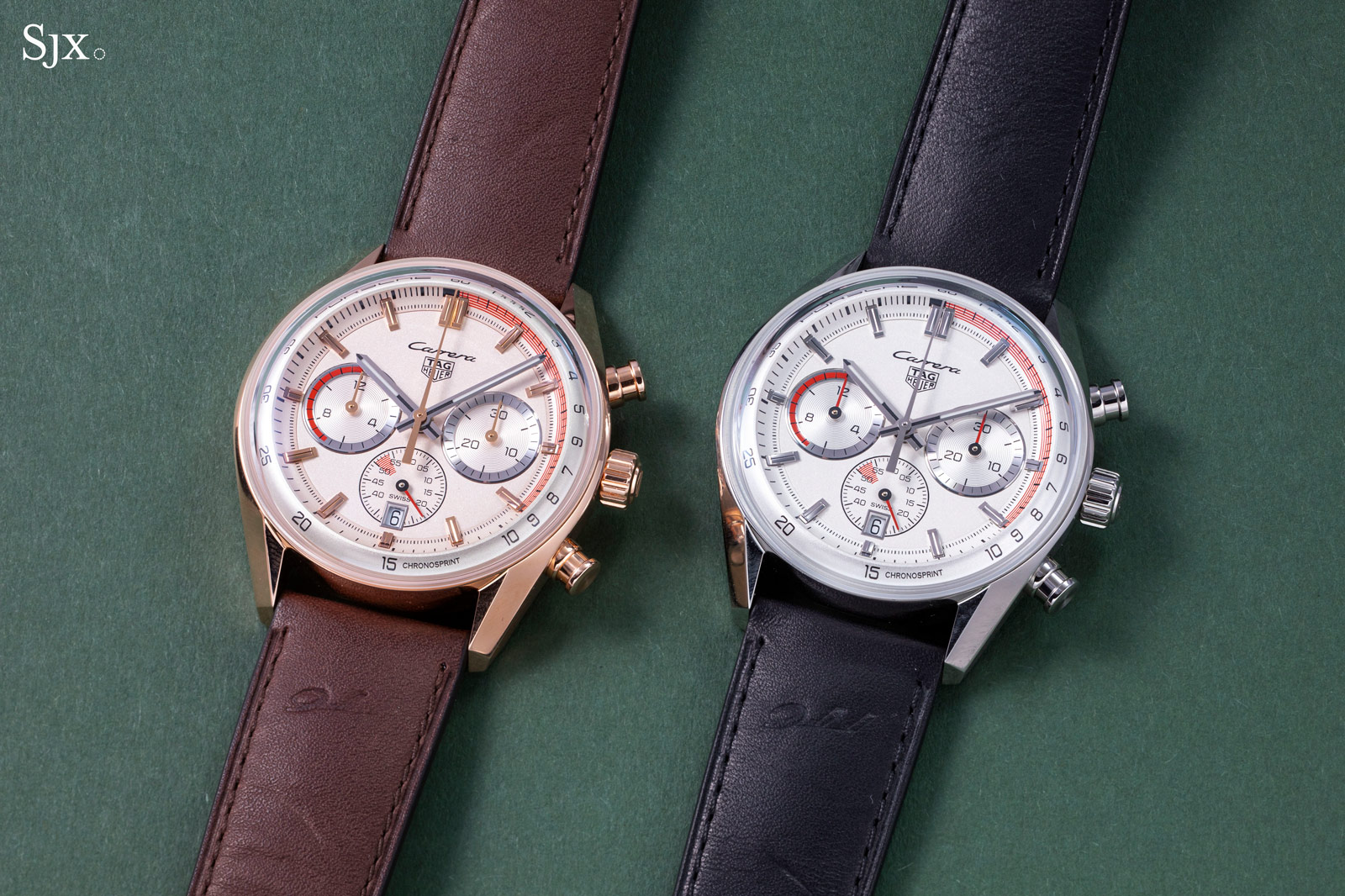
The Chronosprint is available in steel or gold
The increase in size strikes a commendable balance between aesthetics and practicality. However, it’s worth noting the increased thickness, necessitated by the chronograph and its new complication, imparts a slightly bulkier and robust feel to the watch. This additional height, while functional, may be a consideration for those who prefer a slimmer profile in their timepiece.
The “Glassbox” crystal that envelops the dial derives its name from its domed structure—a nod to the distinct style prevalent in the 1970s. Despite its retro inspiration, the design exudes a contemporary and current aesthetic. This distinctive shape not only frames the dial but also seamlessly integrates with the case, creating a cohesive visual appeal.
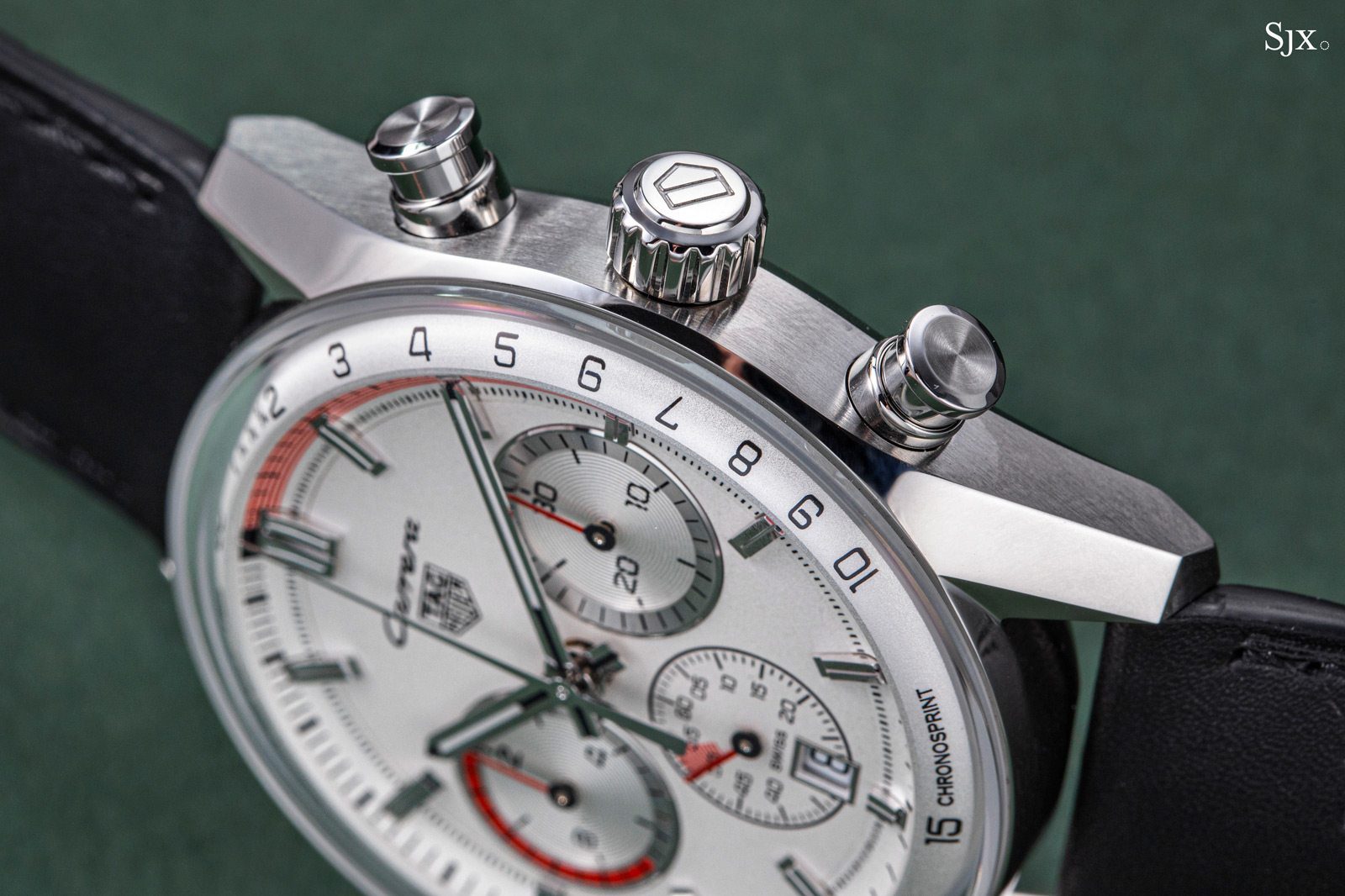
Moreover, this design element serves a practical purpose by opening up the entire dial. It facilitates clear and effortless reading, not just of the central indications, but also of the newly introduced outer progressive seconds scale. This thoughtful design consideration enhances both the form and function of the timepiece.
A motorist’s dial
In the steel version, a shimmering silver dial and flange create a striking visual contrast. Meanwhile, the gold version adopts a warm beige hue for these elements, exuding a distinct character. Throughout the dial, strategic red accents pay homage to automotive aesthetics, seamlessly integrating the spirit of Porsche.
The sub-dial positioned at six o’clock evokes the classic dashboard design, resembling a rev counter from 1970s Porsches. This detail serves as a nostalgic nod to an era when the area around 50 km/h was typically highlighted to remind drivers of urban speed limits.
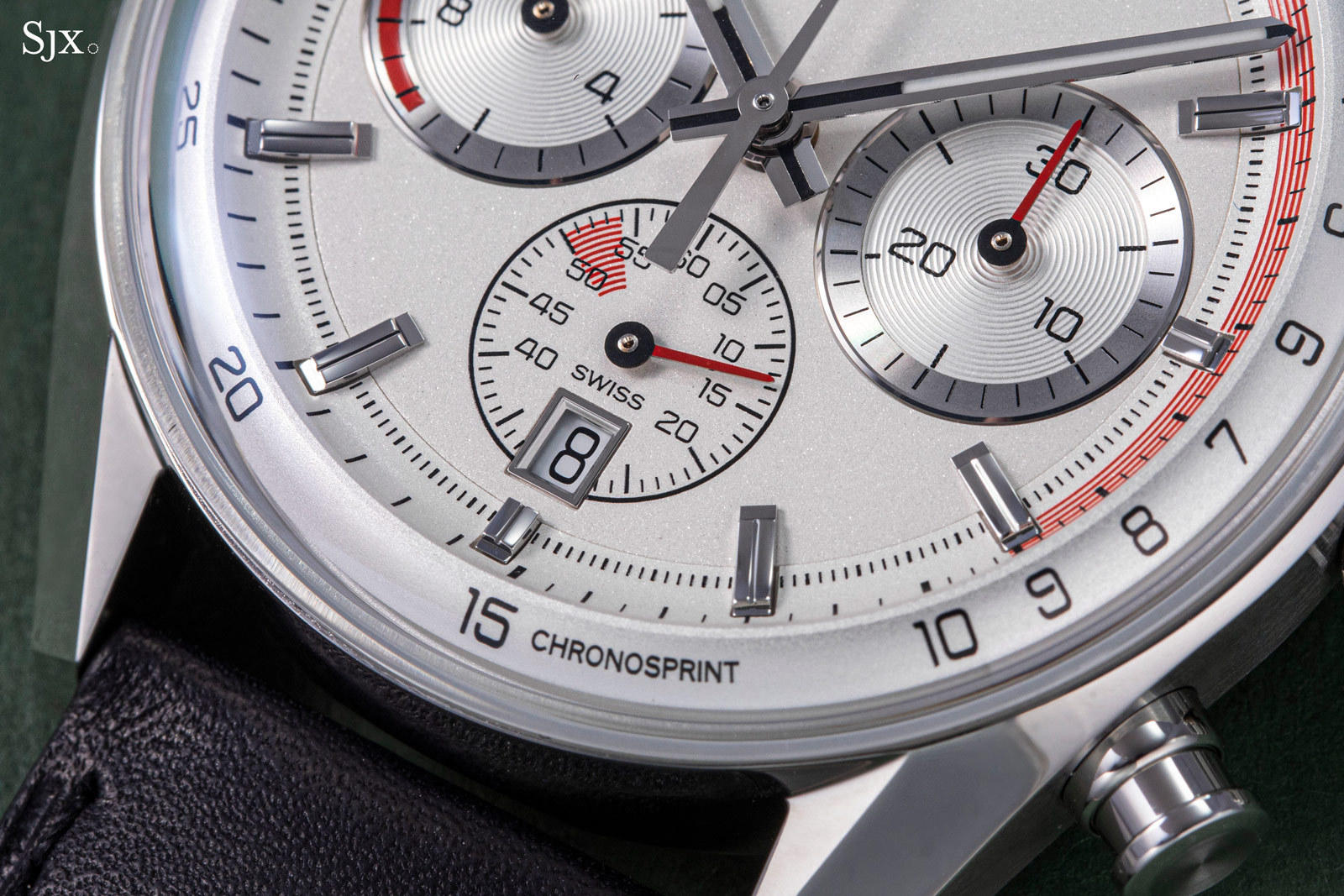
The sub-dial at nine o’clock mirrors this inspiration, recalling the engine’s “redline” revolution limit. Just like the Porsche engines of the 1970s, it commences at 6.8 hours, a direct reference to the recommended 6,800 rpm for gear shifts.
The hour and minute hands serve as the final touch of Porsche-inspired design, replicating the distinctive style observed on period-correct Porsche dashboards. This meticulous attention to detail further solidifies the seamless integration of automotive heritage into the watch’s aesthetic.
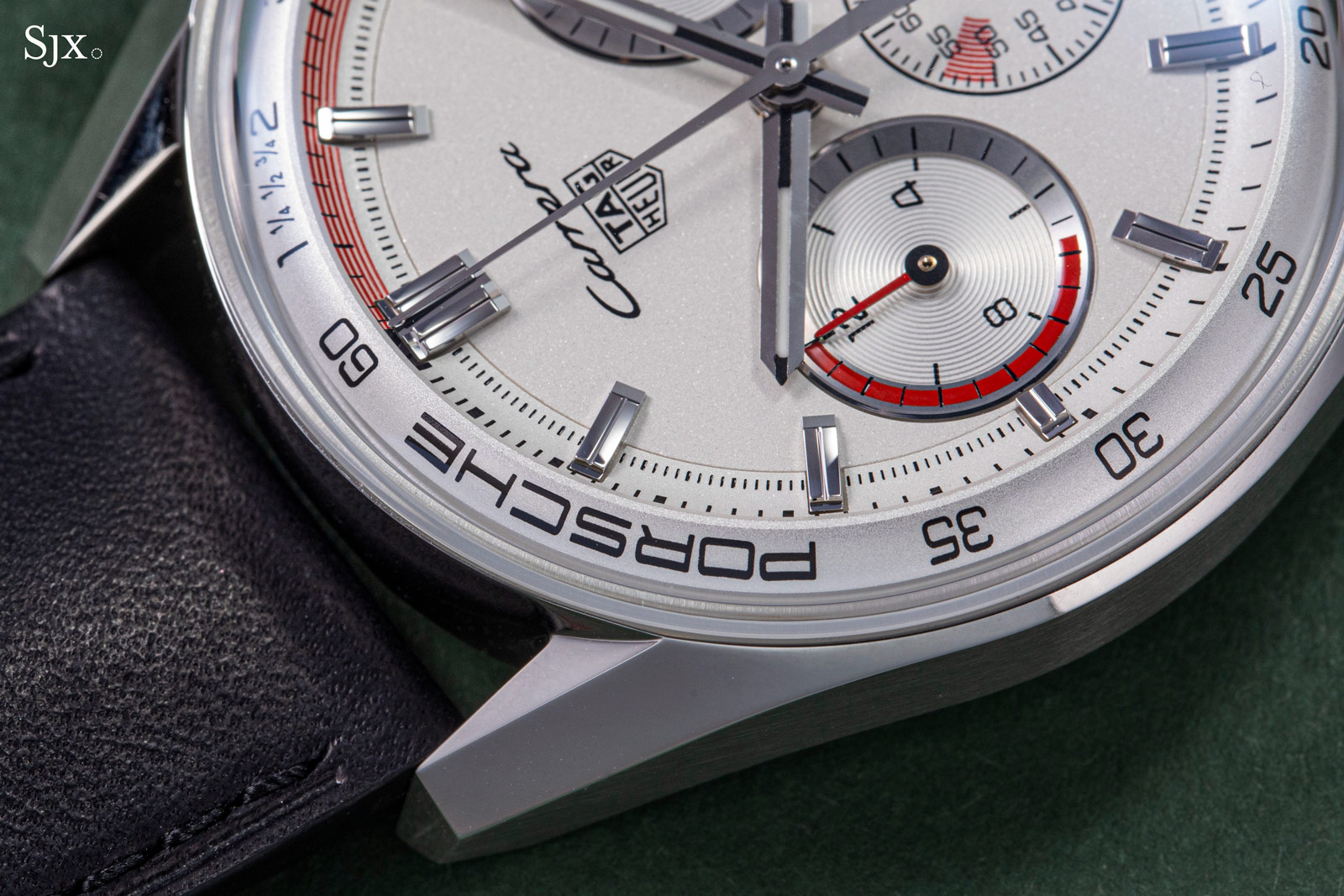
For this Carrera model, TAG Heuer has selected distinct straps. The gold edition is matched with a brown calfskin strap, while the steel edition is complemented by a black version. Both straps feature a tasteful embossing of the iconic “911” emblem, adding an evocative touch to the overall aesthetic.
Concluding thoughts
While TAG Heuer touts the Carrera Chronosprint x Porsche as the “pinnacle of collaboration between the two brands,” the specific contributions of the sports carmaker in its final design and concept remain undisclosed. Regardless of the individual roles played by each participant, it’s evident that the unique complication seamlessly aligns with the sports car theme.
Notably, the “Chronosprint” complication, while intriguing, is reasonably straightforward to execute, which contributes to the watch’s relatively affordable price point of US$9,200 for the steel version. Consequently, this timepiece emerges as an excellent choice for avid motoring enthusiasts, offering a distinctive blend of horological craftsmanship and automotive inspiration without breaking the bank.
Key facts and price
TAG Heuer Carrera Chronosprint x Porsche
Ref. CBS2011.FC6529 (steel)
Ref. CBS2040.FC8318 (rose gold)
Diameter: 42 mm
Height: 14.9 mm
Material: Steel or rose gold
Crystal: Sapphire
Water resistance: 100 m
Movement: Calibre TH20-08 Automatic
Functions: Hours, minutes, seconds, date and chronograph
Winding: Automatic
Frequency: 28,800 beats per hour (4 Hz)
Power reserve: 80 hours
Strap: Calf leather with folding clasp or pin buckle
Limited edition: No
Availability: At TAG Heuer boutiques, retailers and on Tagheuer.com starting September 2023
Price: US$9,200 or 13,150 Singapore dollars (steel); US$23,550 or 33,550 Singapore dollars (rose gold)
For more information, visit Tagheuer.com.
Back to top.

